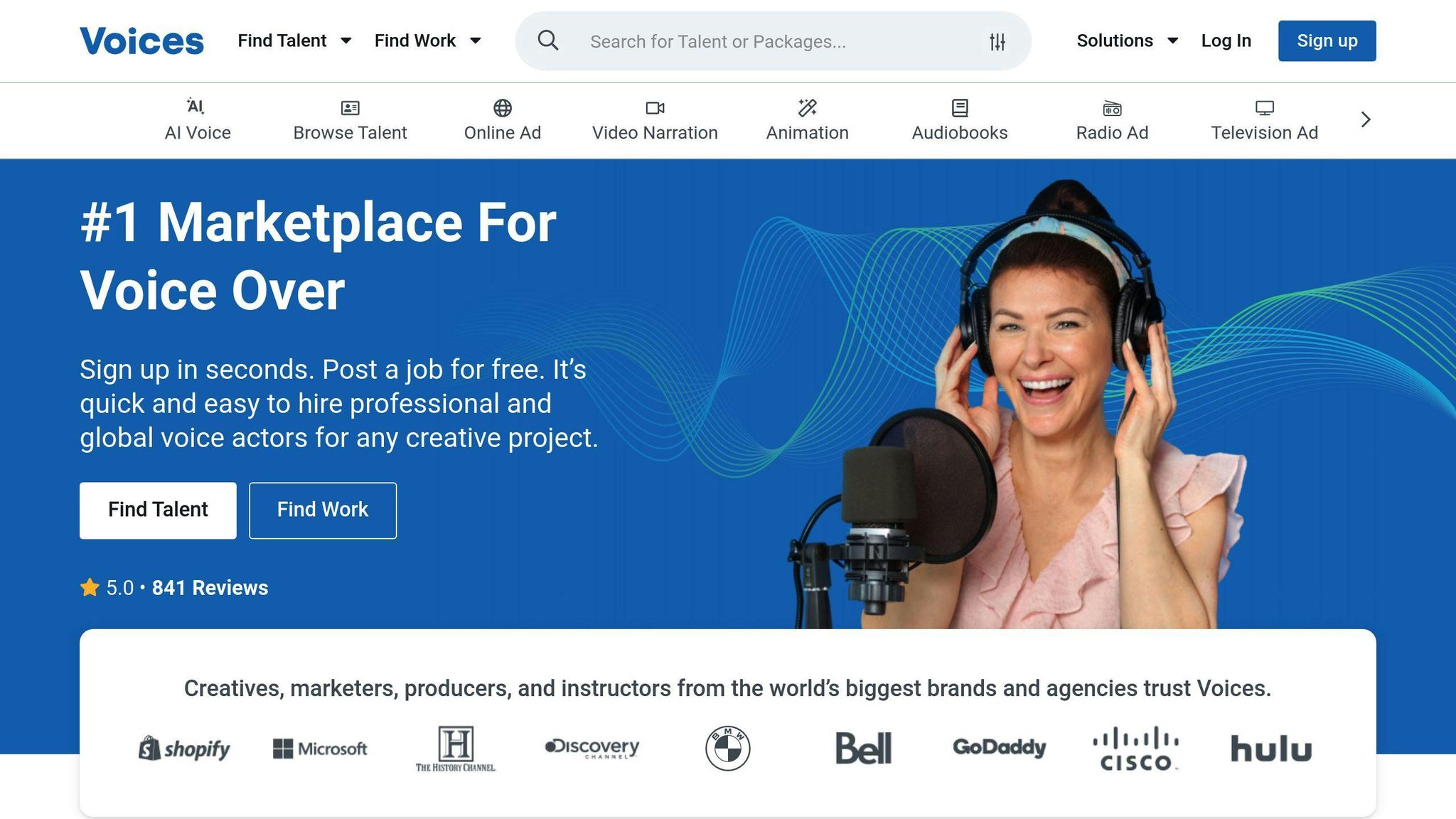AI Emotional Tone in Voiceovers: Benefits and Challenges
AI voiceovers are changing how we create emotional audio content. They save costs, scale easily, and offer multilingual support. But they still struggle with emotional depth and sounding natural. Here's what you need to know:
-
Benefits:
- Reduce production costs and time.
- Ensure consistent emotional tone across projects.
- Enable multilingual voiceovers for global audiences.
-
Challenges:
- Limited emotional range compared to human voices.
- Synthetic voices can sound unnatural.
- Audience trust issues due to "uncanny valley" effects.
-
Solutions:
- Use advanced AI models to improve emotional accuracy.
- Collaboration between creators and developers for better results.
- Follow ethical practices like consent and transparency.
AI voiceovers are improving but still can't fully replicate human emotion. Balancing innovation with ethical use is key to their future success.
How AI Improves Emotional Voiceovers
AI technology is reshaping the voiceover industry, making it easier and more affordable to produce emotional voice content while maintaining quality and consistency. This shift impacts everything from cost savings to delivering a polished, emotional tone across projects.
Cutting Costs and Scaling Up
AI voiceover tools reduce expenses by eliminating the need for lengthy studio sessions, repeated takes, and extensive post-production. Platforms like DubSmart offer flexible pricing, making professional-grade voiceovers available to projects with varying budgets. In addition to cost savings, AI ensures emotional delivery is consistent and tailored to specific needs.
Consistency and Customization
AI brings a major advantage to emotional voiceovers: reliable emotional delivery across different projects. This is especially important for brands that rely on a consistent tone in their messaging.
Voice cloning technology allows creators to:
- Develop custom voice styles that align with specific emotional tones
- Keep brand voices uniform across various content
- Produce personalized audio, like targeted ads or distinct brand voices
Multilingual Capabilities and Accessibility
AI also broadens access to emotional voiceovers with its multilingual features. Platforms like DubSmart integrate voice cloning with language options, enabling creators to connect with diverse audiences while preserving emotional impact in multiple languages.
With tools for transcription, voice customization, and subtitle creation, AI platforms simplify workflows. These advancements make professional-quality voiceovers achievable for creators at all levels, helping them produce content that emotionally connects with their audience.
Challenges in Making AI Voiceovers Emotional
AI voiceovers bring plenty of benefits, but making them convey genuine emotions is a tough nut to crack. These hurdles directly affect how well AI voices can resonate with audiences and create meaningful connections.
Limited Emotional Range
AI struggles to capture the complexity of human emotions. Most systems depend on pre-set emotional cues, which often feel shallow and fail to reflect the depth of real human expression. Without understanding context, AI responses can come across as flat or even mismatched, making it hard to deliver the right emotional tone.
Artificial-Sounding Voices

Synthetic voices often sound unnatural, which can break immersion. Issues like robotic undertones, inconsistent tone, limited inflection, and awkward rhythm make it hard for AI to deliver convincing emotional voiceovers. These flaws can weaken the overall impact and authenticity of the content.
Audience Perception and Engagement
Industries like entertainment and advertising, which make up 77% of voice-over jobs according to a 2017 Voices report, face unique challenges with AI voiceovers. Listeners often find synthetic voices unconvincing, which can hurt trust and emotional engagement. The "uncanny valley" effect - where something almost human but not quite right feels unsettling - can further alienate audiences, especially for emotionally driven content.
Although these challenges are significant, advancements in AI technology and collaborative innovation are paving the way for more emotionally authentic voiceovers.
sbb-itb-f4517a0
Solutions to Improve AI Emotional Voiceovers
AI voiceovers are evolving to sound more natural and emotionally engaging. Recent developments aim to make these systems better at connecting with audiences while adhering to ethical practices.
Enhancing Emotional AI Models
AI is getting better at understanding and mimicking emotions in speech. Using advanced speech recognition and natural language processing, these systems analyze vocal patterns to replicate subtle emotional cues. For example, DubSmart has developed voice cloning technology that captures emotional nuances, helping creators maintain a consistent tone across multiple languages. Still, achieving a truly emotional connection often requires creative input and expertise from human collaborators.
Teamwork Between Creators and AI Developers
Improving emotional AI voiceovers relies on collaboration between creators and developers. This teamwork ensures AI systems can adapt to different emotional contexts, making their output more relatable. For instance, feedback loops allow creators to share insights on voice modulation, helping developers fine-tune their algorithms. At the same time, creators learn how to adjust their scripts for better AI delivery, leading to more effective results.
Responsible Use of AI Voice Technology
As AI voice systems become more expressive, ethical use is crucial. Key principles include:
- Consent and Transparency: Always get clear permission before cloning a voice.
- Audience Awareness: Let listeners know when AI-generated voices are being used, especially in emotionally sensitive content.
- Safeguards Against Misuse: Develop measures to prevent deepfakes or manipulative practices.
Conclusion: Evaluating the Upsides and Challenges
AI emotional voiceovers are reshaping the way content is created, offering lower costs and scalable options. However, their ability to convey genuine emotional depth still falls short compared to human voice actors. This limitation can impact how well audiences connect with the content emotionally. Voice cloning tools, though, are helping creators ensure consistency across languages and expand their reach more efficiently.
Even with recent progress, AI voices struggle to capture the nuanced emotions that human voices naturally deliver. This shortfall is particularly noticeable when it comes to fostering audience engagement and creating a strong emotional bond.
The future of AI voiceovers lies in refining emotional AI models and encouraging collaboration between developers and creators. At the same time, ethical considerations like consent and transparency will play a key role in shaping how this technology is adopted. Striking a balance between innovation and responsibility will be essential.
Here's a quick look at the current state and future potential of AI voiceovers:
| Aspect | Current Status | Future Potential |
|---|---|---|
| Cost & Efficiency | Affordable and scalable solutions | Likely to become even more budget-friendly |
| Emotional Range | Limited compared to human voices | Expected to improve with advanced AI models |
| Authenticity | Can sound artificial at times | Gradual improvements with better cloning |
| Ethical Concerns | Focus on consent and transparency | Stronger guidelines and safeguards ahead |
Content creators need to carefully assess these aspects, using AI to its advantage while addressing its shortcomings to keep their work authentic and maintain audience trust.
